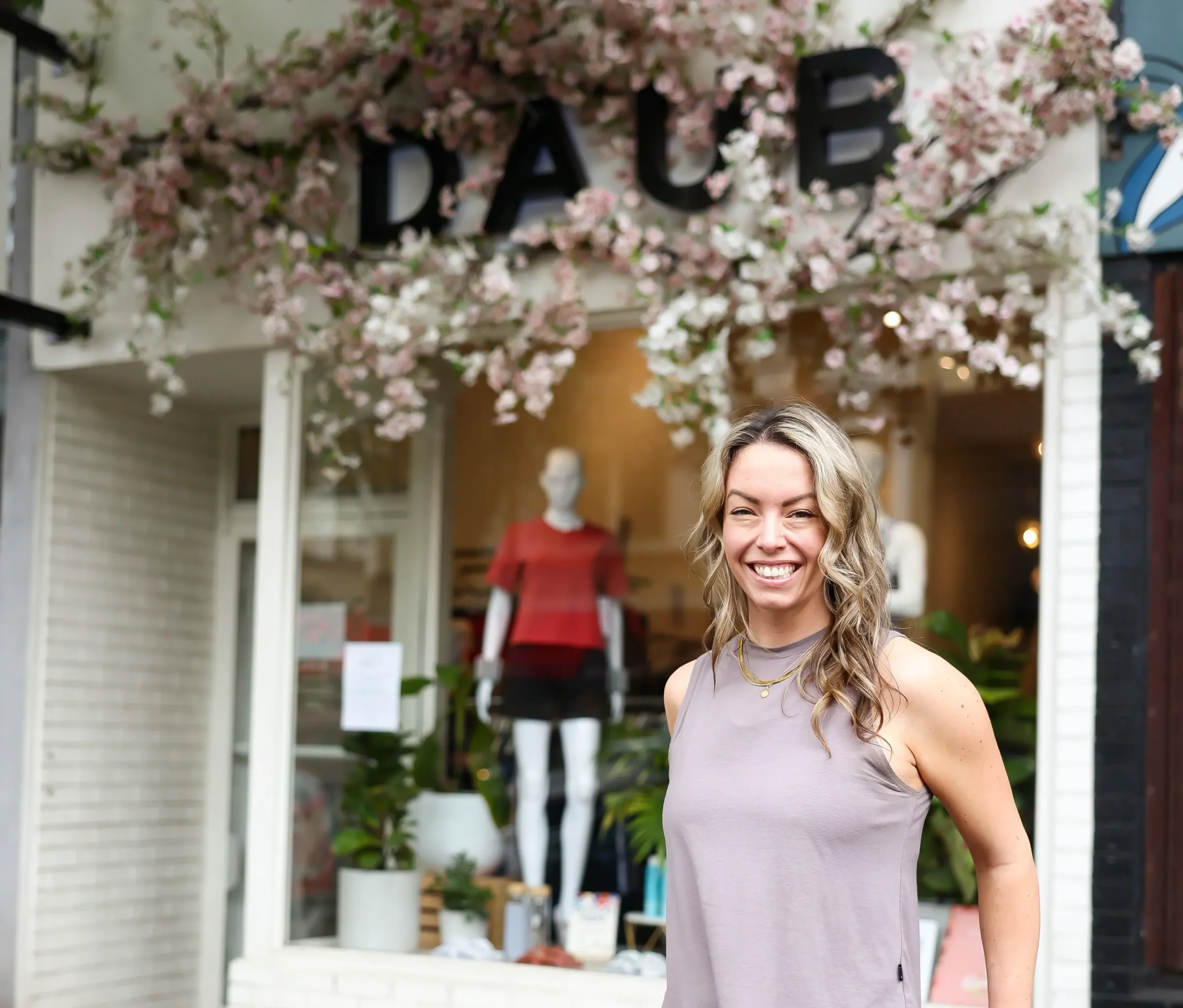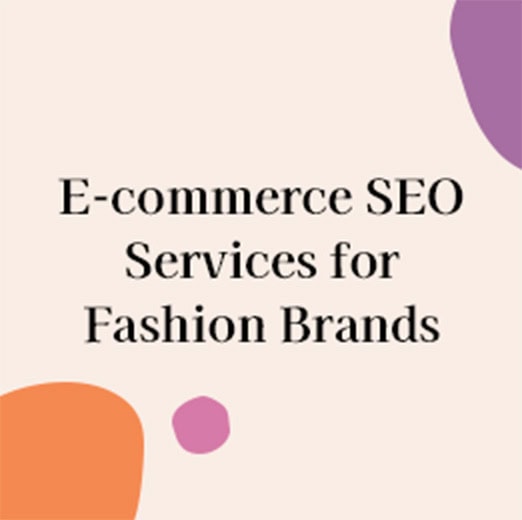Walking the Talk of Sustainability with Lexi Soukoreff of Daub + Design
Look around you. It’s not a new day without another fashion brand showing up in the marketplace—many of which call themselves “sustainable”. And sadly, just as often, these new businesses fizzle out and go under before making any real impact. But for the past fifteen years, Daub + Design has been growing steadily—proving themselves to be an example to follow when it comes to running a sustainable fashion business. How can this be?
Previously in our podcast series, we had released an interview with Lexi Soukoreff, Creative Director and Owner of Daub + Design. Today, we revisit that conversation with Lexi to illustrate that you don’t have to compromise your values in order to be successful. Since the beginning, Daub + Design has been operating on principles of sustainability, and it’s working! Let’s see how they do it!
To get us all on the same page, what do we mean by “sustainable business”? In this article, we define a sustainable business as: A business that is profitable and thriving, creates benefits to workers (especially within the local economy), and aims to conserve the environment.
From this article, you will learn about:
- Practices that Daub + Design have in place to be sustainable.
- What does Lexi do?
- Why is it good for business?
- Major problems that Lexi observes in consumer expectations and fashion industry practices.
- What’s wrong?
- What needs to change?
But before we get started, a little background on Daub + Design
Lexi has a background in textile design—mainly surface design and fabric dyeing. She defines the word “daub” as: to apply colored material to a surface, crudely—like smearing.
Currently Daub + Design offers three different locally-made product lines: Daub + Design—the original hand-dyed pieces; Daub Active—prints derived from her hand-dyed work; and Daub Basics—essentials made from responsibly produced Oeko-Tex standard fabric. All three product lines can be mixed and matched to form a complete outfit.
So now that we know her background, let’s start our discussion of how Lexi takes care of business without compromising her values—and even challenges the mindset and practices of unaware consumers and the conventional players in the fashion industry.
Sustainability as a way of being—not marketing
Local manufacturing and hand-dyeing—a winning process for the environment and local economy
First, let’s talk about people. Daub + Design manufactures their products locally. Once fabrics arrive from overseas, local sewers produce the garments. Products are sold online as well as from their Vancouver-based retail store. By creating fair wage opportunities for local garment and retail workers, Daub + Design helps to grow and sustain the local economy.
Now let’s take a look at Daub + Design’s dye process! It is easy to see how Daub + Design’s hand-dye process results in one-of-a-kind pieces. But what consumers don’t see is how the practice is more eco-friendly compared to conventional ways of dyeing fabrics.
The method Lexi uses for her Daub + Design collection is called “exhausting the dye bath.” She chooses to use nylon spandex for its durability, as it doesn’t pill and lasts for a long time, and because it requires less dye compared to natural fibers such as cotton.
First, Lexi heats the dye bath, and adds the fixatives. Finally she adds the dye. Then the magic happens!
“The water goes all dark, and by the time I'm done with it—after I give it the right amount of time and the right amount of stirring—the water becomes almost clear. Our process involves less water consumption and less dye particles going down the drain. We can just reuse the bath over and over again.”
Stand out without being complicated—aesthetic and niche
What is Daub + Design most known for? Leggings, of course! More specifically well-made, perfectly fitting leggings with a signature tie-dye look. Fifteen years of business and counting, leggings are still Daub + Design’s top seller—a product that customers know and trust.
“We're not a complicated design brand. Our leggings are simple and easy. We’ve always focused on basic silhouettes, and then colour and pattern. From the beginning I wanted a product with a recognizable aesthetic. I think we've really honed in on that.”
Being intentional about their brand’s look and their niche helps Daub + Design stand out from other brands in their market. It’s a smart business move to create this foundation, being the best at one thing first. A great reputation for a signature product drives more reliable and repeat sales. Then the company can take small calculated risks, slowly introducing new products to their loyal customer base.
Resist overproduction and forget about seasons
Lexi is a huge advocate of buying less—buying better. Her business is firmly against the practice of overproduction, committing instead to making garments that will last for many years. As opposed to constantly switching their offerings each season (like many existing brands do), Daub + Design will continue to make products as long as customers want them.
“I have reigned it in really tight. I produce in small batches because I don't want excess. And if something’s selling, we'll still make it. I don't like the term ‘in season’ because these pieces will not be in or out of season. They're meant to last.”
Customers often tell her that they don’t need to replace her leggings—even after seven years. And I too can attest to this since my own pair of Daub leggings still look vibrant and perform like new after many years of use!
Not worrying about trying to blow out last season’s inventory benefits Daub + Design’s bottom line because Lexi can keep her prices consistent. And for customers, they benefit from an easier shopping experience because they know what to expect.
“If I make the same thing, people already know how it fits. They go, ‘I'm a medium. I know I like those pants.’ So ordering online or picking it up off the shelf is a lot easier.”
Two steps forward, one step back - Lexi’s frustrations and call for consumer and industry change
For Lexi and her peers in the sustainable fashion and retail space, their efforts can often feel like an uphill battle. While Daub + Design is a prime example of an apparel business that works towards sustainability, we know that in order to make improvements for the economy, planet and people, consumers and retailers need to be aware and willing to change the way they think and behave.
Let’s take a look at what troubles Lexi the most, as well as her hopes and visions for change.
They just don’t know—unrealistic consumer expectations
Consumer opposition and negative opinions are all too common for sustainable brands with similar values as Daub + Design. And we can’t always blame those consumers when fast-fashion brands with big marketing budgets tout themselves as “sustainable” while selling their products for cheap.
“Someone once commented on Facebook, ‘How can you justify charging $138 for a pair of leggings that probably only costs $10 to make?’ Many consumers just don’t understand the cost of running a true sustainable business. On top of acquiring our fabric, and cutting and sewing it like normal companies do, we add a whole other layer to our process. We get the garment wet, dye it, wash it, dry it, and iron it back into place. We're paying fair wages for local labor, and we use environmentally-friendly packaging. We actually should be charging a lot more, but we don’t because there’s a ceiling for the price point that our market can tolerate.”
In the past, Lexi was less likely to respond to criticisms, but now she uses those opportunities to gently inform people about the realities of the fashion industry. It takes patience from Lexi, but it’s worth it—because many times, the truth does get through to some of those consumers.
Time to shift priorities—the industry’s fashion cycle and marketing
From more thoughtful design to local manufacturing, fair wages, and cleaner production practices—individual designers and small business owners are making impacts on a local level, but if the larger commercial brands and retailers refuse to get in the game, how can we ever expect to see change on a global scale?
Right now, manufacturers and retailers produce and try to sell too much inventory—so many cheaply made goods designed to tolerate price drops, and encourage constant replacement. Instead, they should invest in making smaller quantities in a more ethical and quality-focused way. But how will they profit? By offering products for sale when consumers actually need them!
“Conventional retailers have trained consumers to wait for a discount. Switching to a ‘buy now, wear now model’ could help to prevent initial markups that result in big price reductions months later. For example, right now, retailers are putting spring products on the shelves in February, but people don’t need them yet. So those products end up going on sale in May—when people actually need them.”
Conclusion
If you’re looking for ways to make your fashion apparel business more sustainable, Daub + Design is a great example.
For the past fifteen years, Lexi Soukoreff has built a successful business creating fair-wage opportunities for local garment and retail workers, using eco-friendly hand-dye processes, and resisting overproduction.
By focusing on a recognizable aesthetic and creating a foundation of best-selling products, Daub + Design stands out from other brands in their market. And their commitment to making long-lasting garments has earned them a loyal customer base who appreciates the quality of their products.
Finally, Daub + Design is unafraid of challenging the mindset and practices of unaware consumers and the conventional players in the fashion industry—proving that it is possible to take care of business without compromising values.
Things to Think About:
What is one sustainability goal that you plan on implementing in your business this year?
How can you structure your business so that you can make money, help people, and conserve the environment?
What are your values and how do they play out in the way you run your business?
“What you do makes a difference and you have to decide what kind of a difference you want to make.”- Jane Goodall
Listen to the full interview with Lexi Soukoreff of Daub + Design.
Read our previous article about Daub + Design: If You Can Overcome This, You Can Overcome Anything




